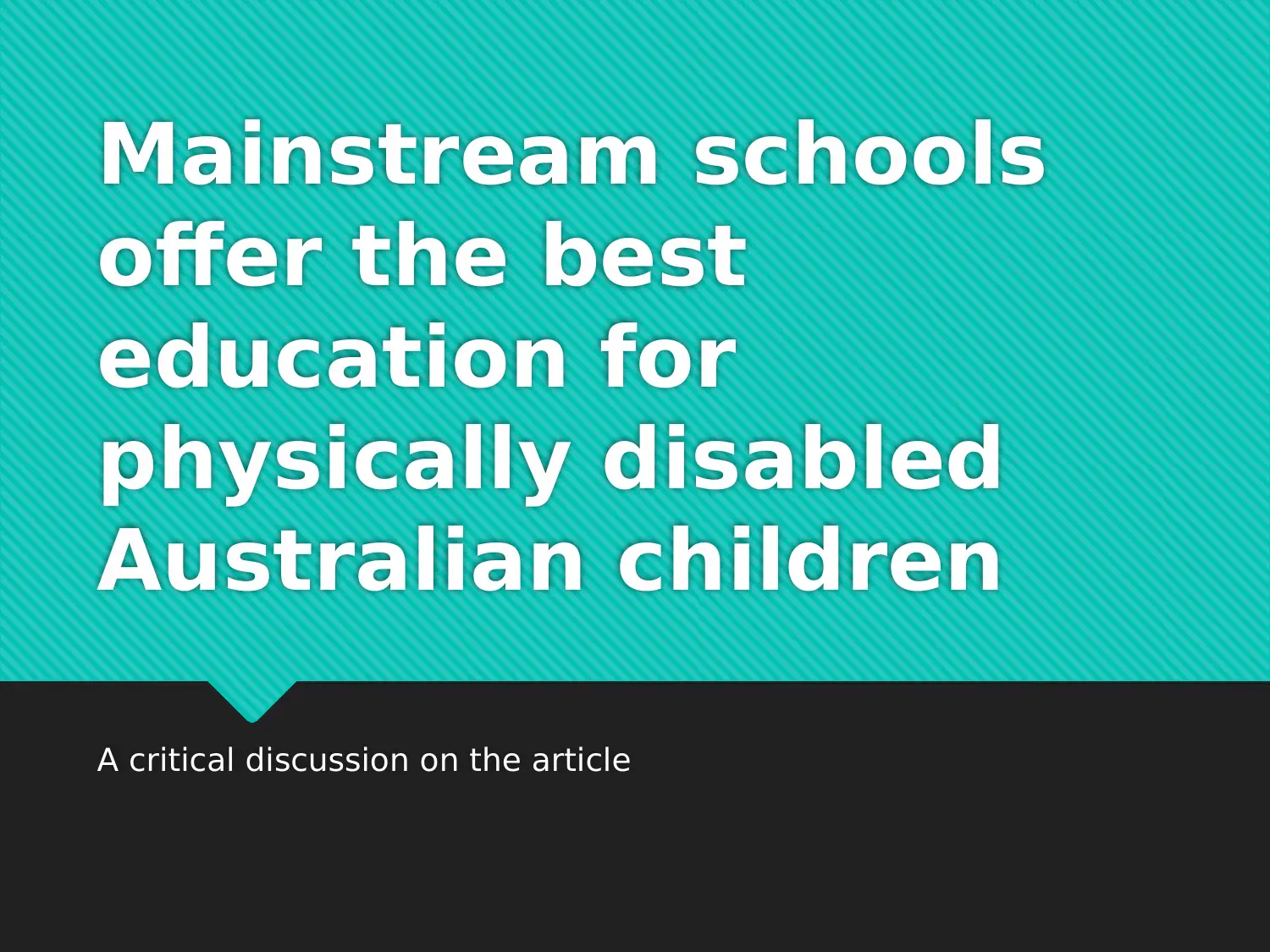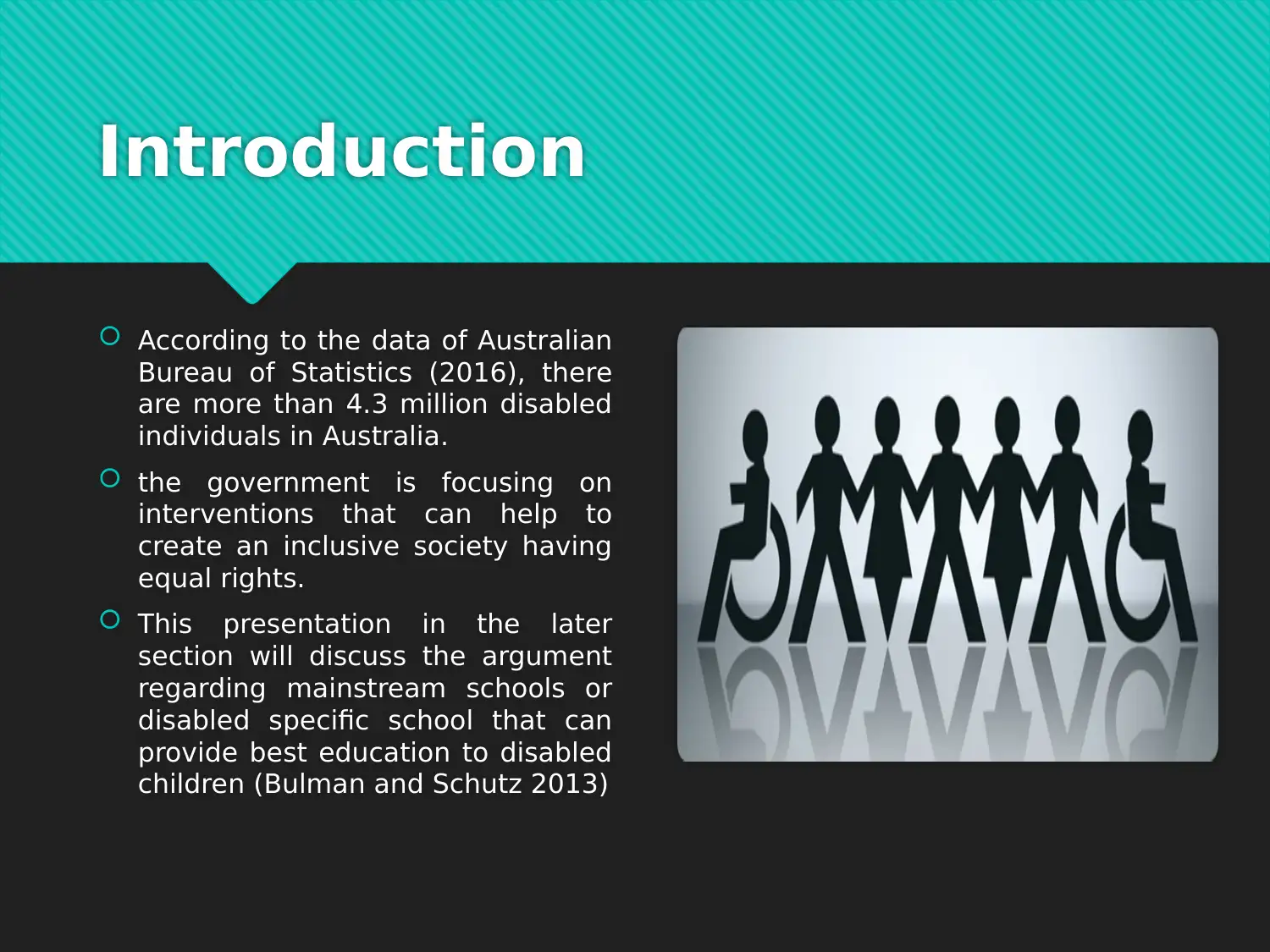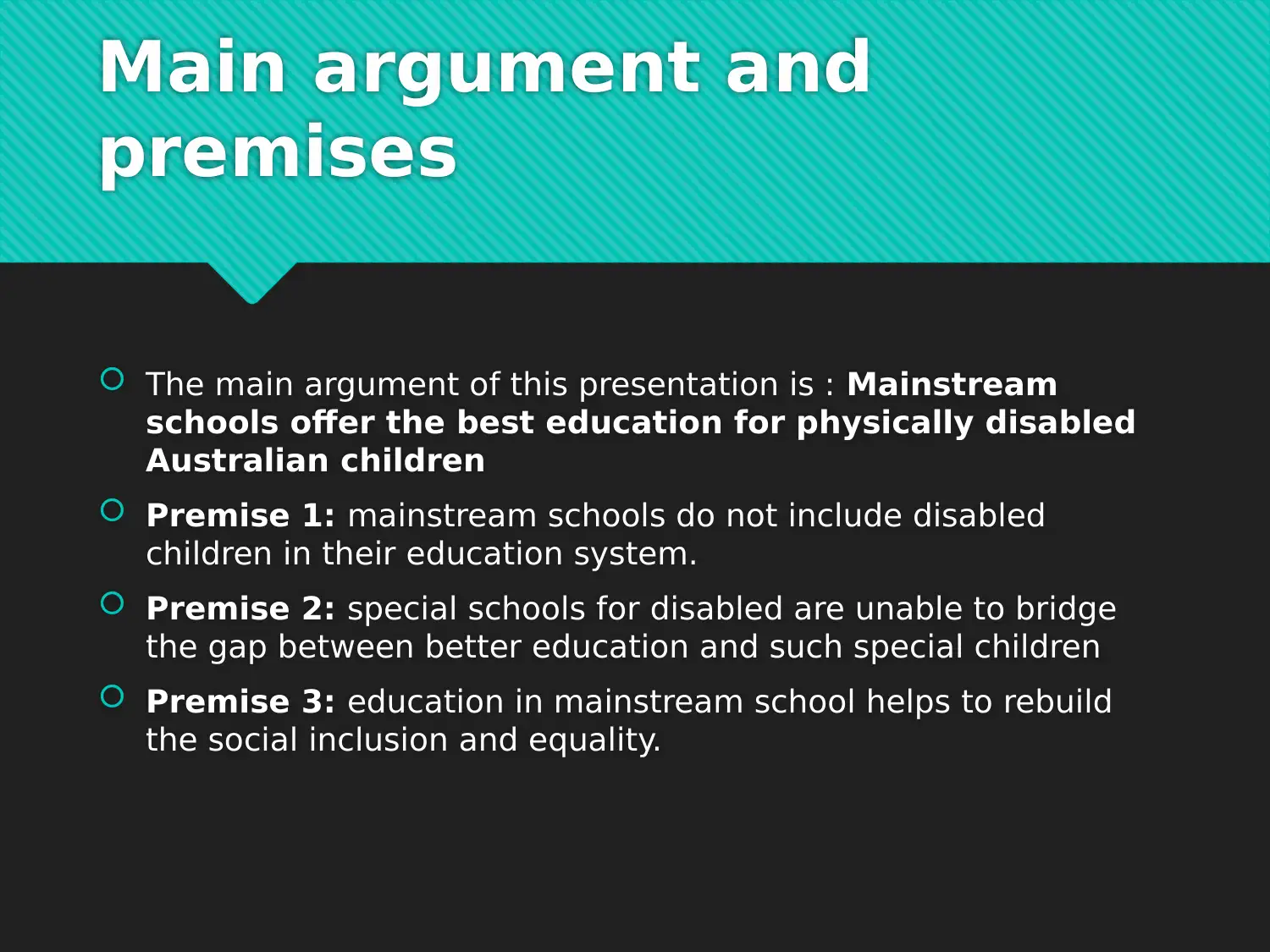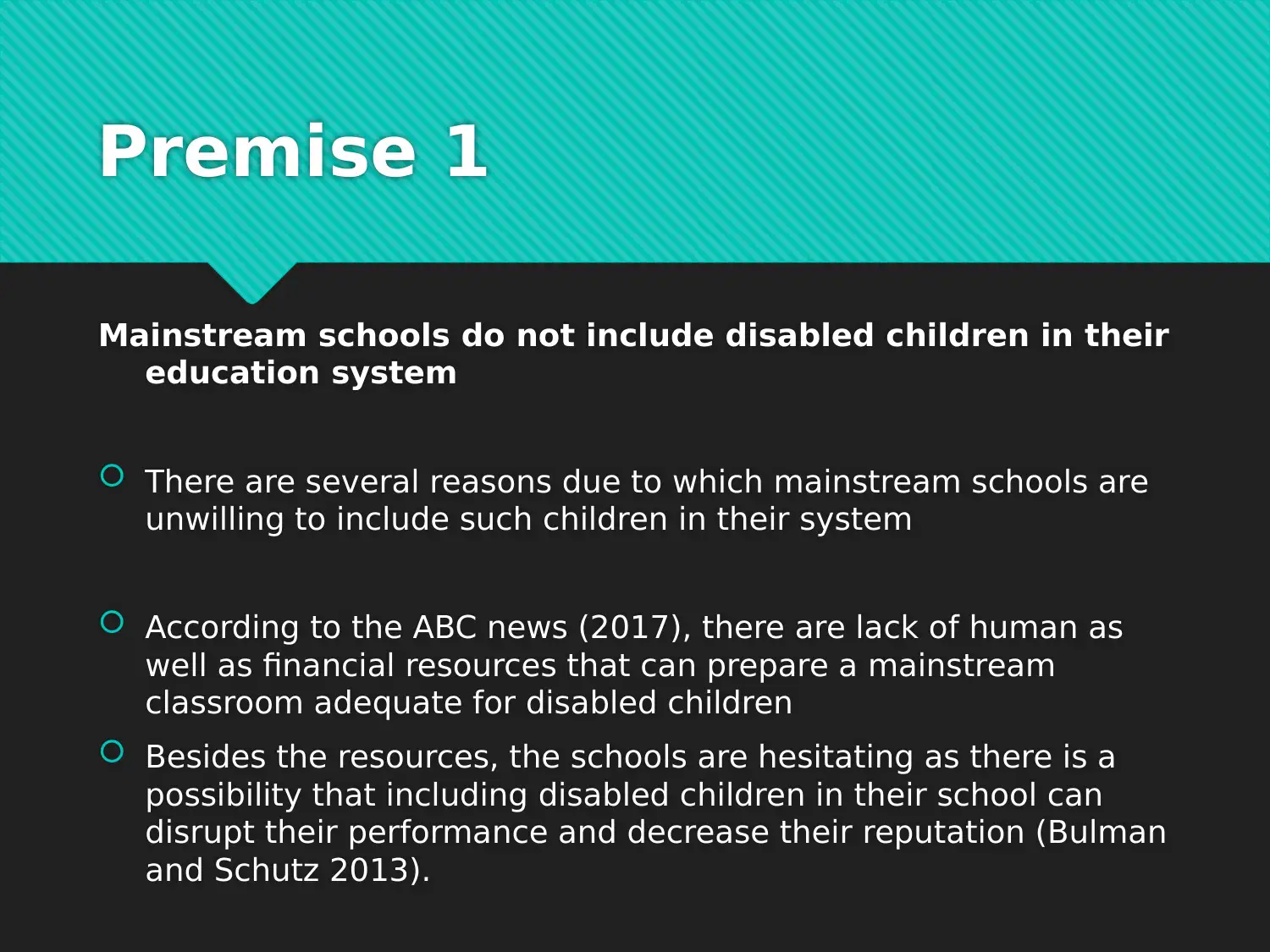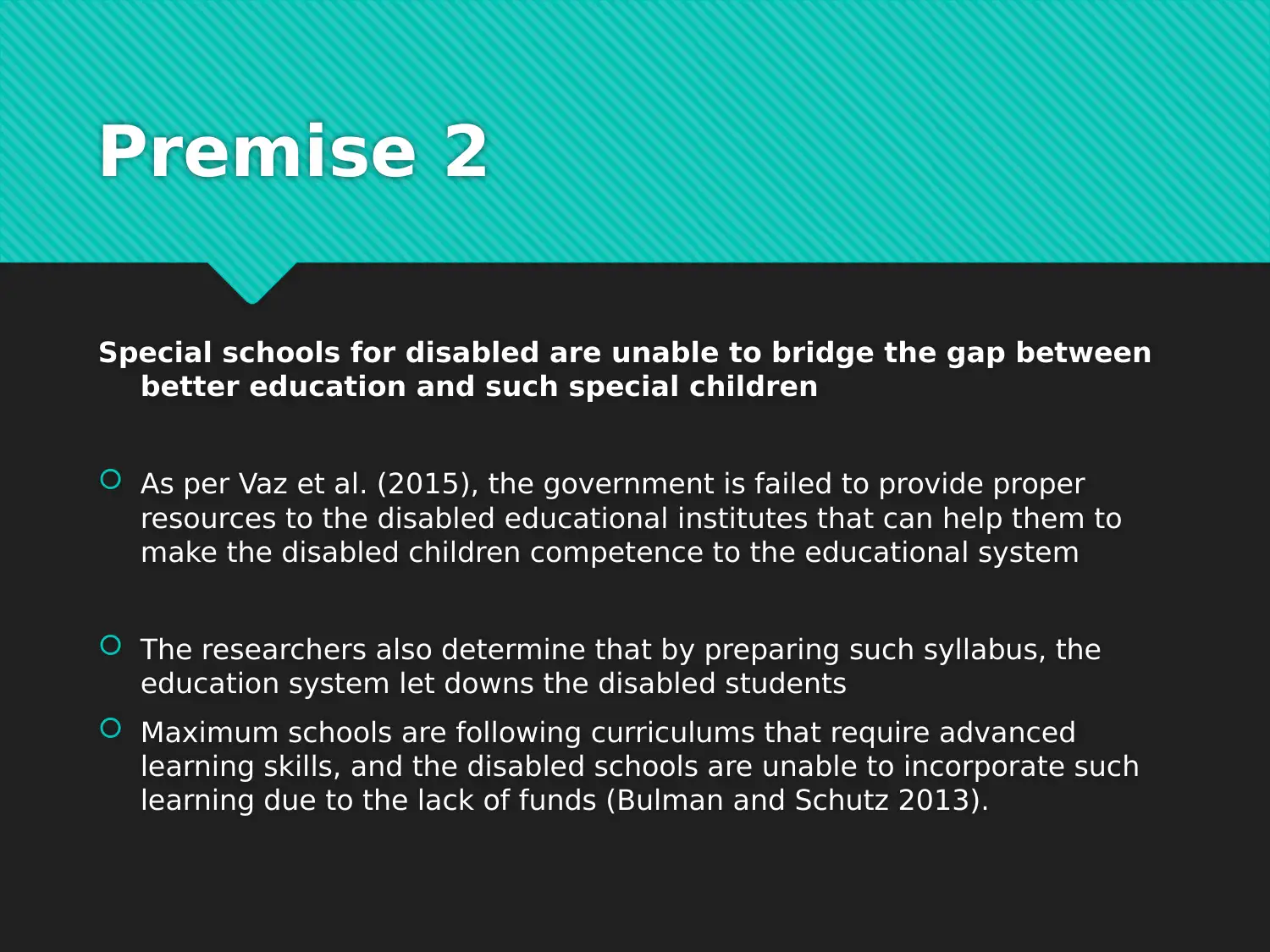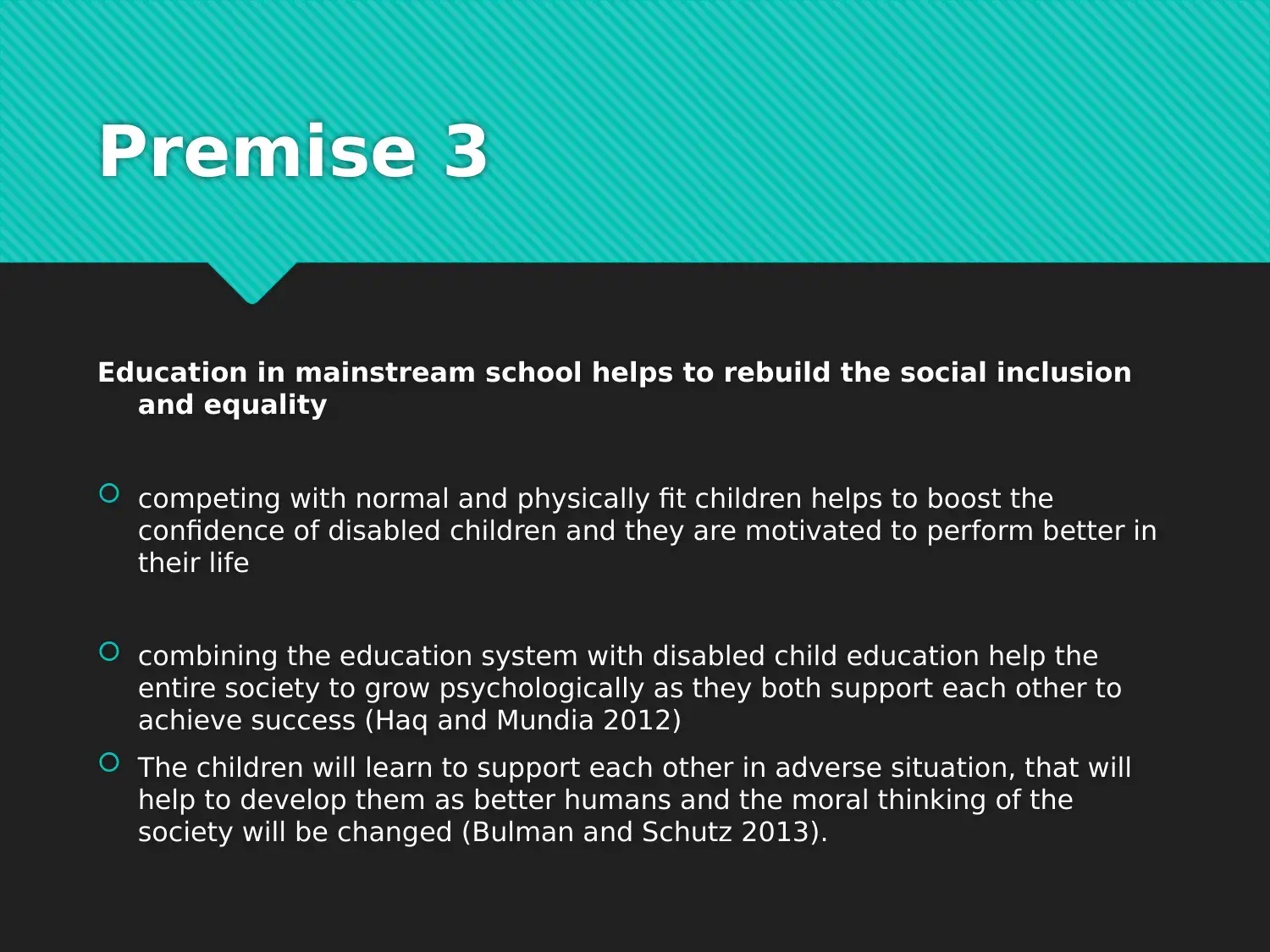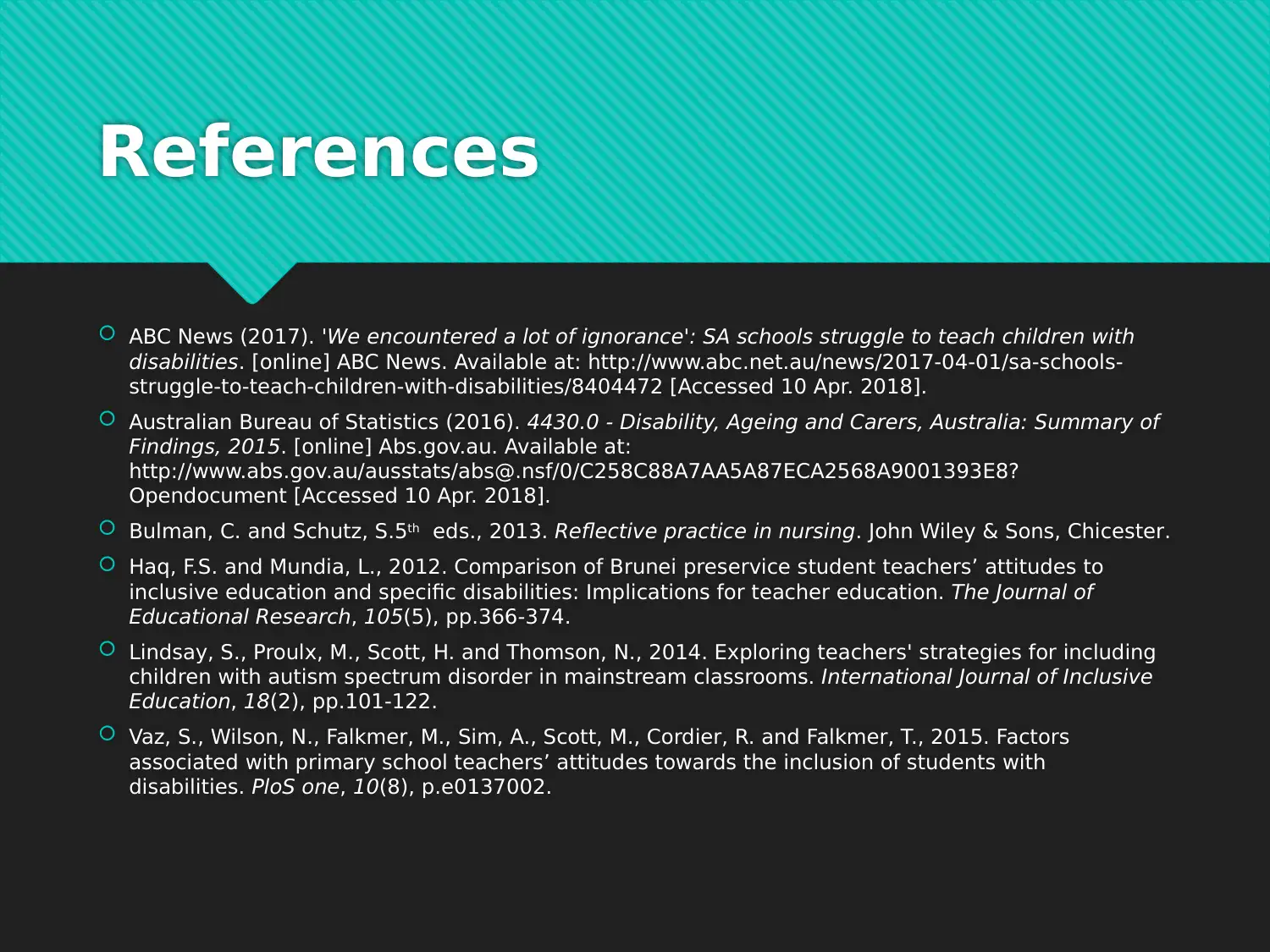NMIH204 Presentation: Mainstream Schools Best for Disabled Children
VerifiedAdded on 2023/06/13
|8
|757
|139
Presentation
AI Summary
This presentation critically discusses whether mainstream schools offer the best education for physically disabled Australian children. It begins by highlighting the number of disabled individuals in Australia and the government's focus on creating an inclusive society. The main argument presented is that mainstream schools provide a superior educational environment compared to specialized schools. The presentation addresses the premises that mainstream schools may lack resources and be hesitant to include disabled children, while special schools may lack resources to provide adequate education. It argues that mainstream schools foster social inclusion and equality, boosting the confidence of disabled children and promoting a more supportive and understanding society. The presentation references various sources, including the Australian Bureau of Statistics and ABC News, to support its claims.
1 out of 8
